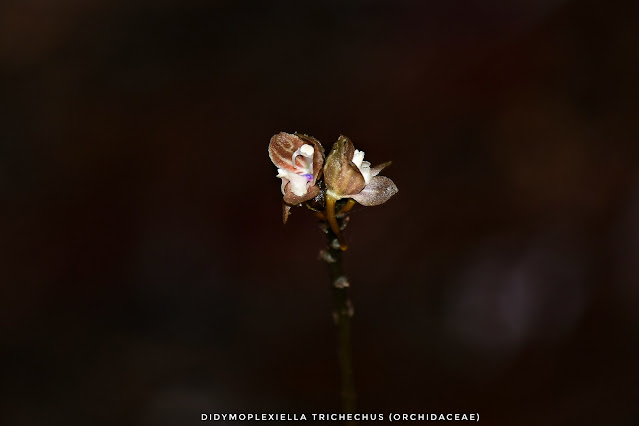พืชอาศัยรา myco-heterotrophic plants
Myco-heterotrophic plants are plants that get their nutrients and energy from fungi, either partially or entirely, and are not photosynthetic. They form a symbiotic relationship with fungi, which can be arbuscular mycorrhizal, ectomycorrhizal, or saprotrophic
Here are some characteristics of myco-heterotrophic plants:
- They may be leafless, or have fewer or smaller leaves
- Their leaves may be variegated
- They may have low or no chlorophyll
Some examples of myco-heterotrophic plants include:
Pterospora andromedea, Sarcodes sanguinea, Voyria clavata, Cephalanthera damasonium, Kupea martinetugei, and Afrothismia hydra.
Myco-heterotrophy is thought to have evolved from mycorrhiza, which is a relationship where fungi help plants absorb water, nutrients, and minerals from the soil.
Examples of myco-heterotrophic and partially myco-heterotrophic plants from different angiosperm families: (A) Pterospora andromedea, (B) Sarcodes sanguinea (both Pterosporeae; Monotropoideae; Ericaceae), (C) Voyria clavata (Gentianaceae), (D) Cephalanthera damasonium (Orchidaceae), (E) Kupea martinetugei (Triuridaceae), and (F) Afrothismia hydra (Thismiaceae).
Myco-heterotrophic plants are partly or entirely non-photosynthetic plants that obtain energy and nutrients from fungi. These plants form a symbiosis with arbuscular mycorrhizal , ectomycorrhizal or saprotrophic fungi to meet their nutrient demands.
พืช Myco-heterotrophic เป็นพืชที่มีบางส่วนหรือทั้งหมดที่ไม่สามารถสังเคราะห์แสงเองได้จึงต้องอาศัยรับพลังงานและสารอาหารจากเชื้อรา พืชเหล่านี้จึงก่อให้เกิดการอยู่ร่วมกันกับเชื้อรา arbular mycorrhizal, ectomycorrhizal หรือ saprotrophic เพื่อตอบสนองความต้องการสารอาหารของพวกมันนั่นเองในเมืองไทยตอนนี้ที่เริ่มเป็นที่รู้จักพืชชนิดนี้กันมากขึ้นคคือ ต้นพิศวง แต่ชนิดอื่นๆก็มีความสวยงามน่าทึ่งไม่แพ้กันทำให้เราอยากจะเริ่มสะสมภาพสวยงามเหล่านีอีกกลุ่มหนึ่งด้วย
จากป่ากรุงชิงช่วงเดือนกันยายน
กล้วยส้มกรุงชิง Didymoplexiella trichechus กรุงชิง 26/10/2567








ไม่มีความคิดเห็น:
แสดงความคิดเห็น